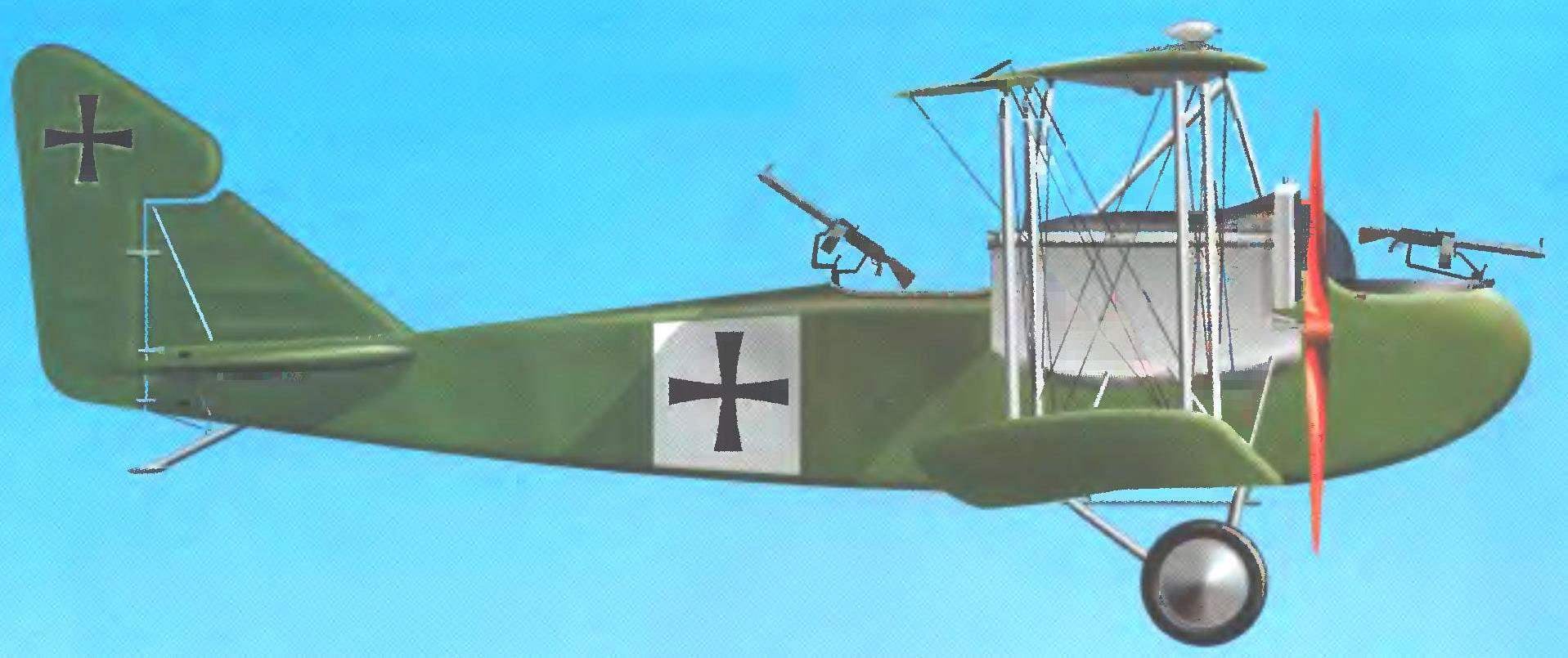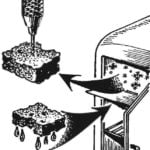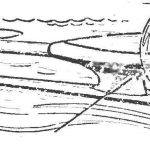 German medium bomber AEG G. IV. On the eve of the First world war in Germany great attention has been paid to the development of the airship. Thanks to the work of count Ferdinand Zeppelin, the Germans had at its disposal a huge fleet of aircraft specially designed for carrying out bombing operations with a flight range of 8000 km and a bomb load in 9 — 10 tons. The presence of such forces determined the whole concept of the development of German aviation, which was to be the fighters, designed to protect the airships and their bases.
German medium bomber AEG G. IV. On the eve of the First world war in Germany great attention has been paid to the development of the airship. Thanks to the work of count Ferdinand Zeppelin, the Germans had at its disposal a huge fleet of aircraft specially designed for carrying out bombing operations with a flight range of 8000 km and a bomb load in 9 — 10 tons. The presence of such forces determined the whole concept of the development of German aviation, which was to be the fighters, designed to protect the airships and their bases.
In Italy, France, UK and Russia, where the construction of large airships of a rigid structure almost nobody was doing multi-engine bombers found more and more supporters. The first months of the war showed that the Germans made a major bet on airships, made a serious mistake.
For a short period of time, or rather — for one month, they lost in the battles over France and Russia six airships, and even one Zeppelin was captured by the enemy. The airship with its huge size turned out to be a very convenient target for anti-aircraft guns of the enemy, and for his fighters. From destruction its not saved any powerful weapons, including guns or high altitude flight. In addition, the reputation of the Zeppelin airship spoiled a lot of accidents.
In Germany, however, did not hurry to completely abandon the air of giants. They planned to lay the strategic tasks— such as strikes in the deep rear of the enemy, in his industrial and political centers. The execution of the same tactical problems were planned to instruct the aircraft.
At the end of 1914 the German General staff turned to aircraft manufacturing firms with orders for medium bombers bomb load about 250-300 kg, which could operate near the front lines and strike at the enemy communications, where the air defense is particularly strong.
It so happened that everything is built under this order, the aircraft was a twin-engine diagram, most popular in Europe. The first machine German German fleet has adopted into service in 1915.
One of the best among these machines is triple biplane company AEG (Allegemente Elektrizitats Gesellschaft— Universal electric company) with two Mercedes engines with a capacity of 100 HP, He received the designation K-1, derived from the German term Kampfflugzeug combat plane. Due to busy with other orders, the company was able to build only ten of these aircraft.

The AEG G. IV bomber, captured by the allies

French pilots pose in front of the trophy AED G. IV.
Light bomber K-2 with a range of 450 km was released a series of 24 copies. On a car of this type for some time it was flown the famous ACE Manfred von Richthofen.
Until 1916 the firm AEG has released another type of aircraft—twin-engine TRACELEVEL K-3, which was built in number of 120 copies. After changing the notation system machine became known as the G. III (from the German Groß—large). If you consider that from 1915 to 1916, all the aviation industry in Germany has released 750 aircraft-bombers type Groß, the share of output of a firm AEG will be very significant.
In 1917 on the basis of G. III aircraft company is building a new bomber, G. IV, which was the best plane AEG built in the period of the war. Externally it differed from the G. III two-blade propellers four-bladed instead of curved, and the curved trailing edges of the ailerons. Until may 1918 was built 216 instances of this twin-engine biplane.
The aircraft is specially adapted for operations in close behind enemy lines. During the production of the bomber was enhanced by his design and established a new, more powerful engines from Mercedes (260 HP vs 158 HP at G. III). Increased the number of devices in the cockpit, improved the equipment. Earlier actions of the night had to create a special aircraft modifications with index N, now any G. IV could be bombed at the dimly lit target air thanks to a new optical sight. Besides, there are more hardpoints for bombs. The crew was first used jumpsuits with electric heating.
The first planes began to enter the army in late 1917. Machine immediately liked pilots, because of their powerful design to withstand any frontline woes. The case when one of the G. IV collided in the air with enemy fighter and bomber pilots managed to land the damaged car.
With the advent of reliable multi-engine bombers began to develop tactics of using such machines. In the autumn of 1916 the Germans had developed a plan of operation Turkenkreuz (German—Turkish cross), the purpose of which was holding the massive bombing of cities in England from airplanes. From that moment the war came the era of group raids, which involved dozens of similar machines. Accordingly, increased and the force opposing such raids, and air defense systems. In response, the firm AEG has released a special version of its G. IV with index K.
The new version of the aircraft booked the engine hood and the cockpit. Instead of the front machine gun on the G. IVK put 20 mm cannon Becker. To increase the range and compensate for the increased take-off weight G. IVK had to increase the wingspan by as much as 9 meters and apply dvuhkilevoe empennage. Total built about 150 of these machines.
Further development of this aircraft was the machine G. V, inherited from its predecessor, huge wings. The duration of the flight, the G. V was up to six hours. G. V became the last military aircraft company AEG built during the First world war.
In 1917-1918 the AEG G. IV was considered a great tactical bomber, according to pilots, the best in its class. At the end of the war, the G. IV was the basis of German blizhnevostochnoy aviation. These machines are widely used on the Western front, in particular when applying the last of the German attacks in Picardy and in Flanders in the spring of 1918. On the Romanian front of the squadron AEG bombed Bucharest and in Italian — Venice and Padua.
After the Germans completely abandoned the use of airships and to change those “big bubbles” came a heavy strategic bombers, Zeppelin Staaken R (R— from the German riesig—huge), G. IV become involved for their support in far behind enemy lines. In the air they performed the function of fighter, as the real representatives of this class could not overcome the large distance that could fly the planes with the index R.
In conjunction with the G. IV had a similar problem and well-known medium bombers Gota. In one RAID usually participated 1 to 3 bomber Zeppellin, a dozen Gota and several G. IV.


Bomber AEG G.IV:
1 — front wing; 2 — cable brace; 3 — wooden two-blade propeller; 4 — engine; 5 —fuel tank 6 — visors cockpit; 7 — struts of the upper wing; 8 — truck chassis; 9 — wing-mounted bomb racks; 10 — fuselage bomb racks; 11 — machine gun Bombardier-Navigator; 12 —safety barriers; 13 — machine gun arrow; 14 — brace Kiel; 15 — thrust rudder; 16 pegs; 17 — disc store; 18 — turret ring; 19 — a bolt; 20 — perforated casing gun; 21. motor; 22 — rack of the engine; 23 — rack truck chassis; 24 — wheel; 25 — exhaust pipe; 26 — control knob radiator; 27 — rod; 28 — brace; 29 — tubular elements of the power set; 30 — the rudder of the aircraft of the first series; 31 cards; 32 — fuel filler neck; 33 — thrust control; 34 — tubular wing spar; 35 — additional rib sock wing; 36 — wing sock; 37 — the rudder the aircraft later series; 38 Kil; 39 — turret ring; 40 — brace stabilizer; 41 — skid; 42 is the upper wing; 43 — traction control ailerons; 44 rocking Aileron; 45 — Aileron; 46 — pedal; 47 — axis; 48 — aerodynamic compensator Aileron; 49 — Aileron; 50 — cabin arrow; 51 — aerodynamic compensator of the Elevator; 52 — the steering wheel height; 53 — the rocking of the rudder; 54 — the hinge of the Elevator; 55 —stabilizer; 56 — reinforcing plates; 57 — attachment points of the struts; a 58 — seat Navigator; 59 —attachment of the safety of arc; 60 — seat arrow; 61 — attachment of the upper wing strut; 62 — seat pilot, 63 — hatch; 64 — porthole cabin Bombardier-Navigator; the 65 — stand of the engine; 66 — pipe of the power frame of the fuselage; 67 — unit stabilizer; 68 — fixing unit of the machine gun; 69 — guide; 70 — lock; 71 — handle fixing: 72 — rubber shock absorbers; 73 — axle truck chassis; 74 — the lower wing
So, on the night of 19 may 1918 three R. VI, 18, Gota and two G. IV appeared over London and dropped about 3200 kg of bombs. There were performed 11 joint missions.
In 1916 the company AEG, inspired by the success of the company Zeppelin, gathering under one roof the best minds in Germany, attempts to create a bomber type R. She has built the only instance of a similar aircraft, the designation of R. I. a twin screw four-Engine bomber, designed by designer sander had a fully enclosed cabin and a reinforced chassis. The engines were located inside the Central fuselage; through a complex system of bevel gears, each pair of motors rotates its two-bladed propeller. The latter were installed between the wings close to the fuselage. In its layout the machine is very like the plane V. A. Slesareva Svyatogor, who was in the construction of the plant Lebedev since 1914. Takeoff weight R. 1 reached 9 tons, and the wingspan was 36 feet. The firm AEG has plans to build eight giant aircraft, but the first instance crashed during a test flight, after which the company refused to continue work on I. R.
The design of the bomber
The design of the bomber AEG G. IV was a rather exception to the traditions of the aircraft industry of the time. The frame of the fuselage was made from a steel with composite plating: at the tail he trimmed the fabric, and forward—thin plywood. The frames of the wings and struts of the engine mount was made of steel pipes. The covering of the wings–plain with a lacquer coating.
Landing gear consisted of a pair of two-wheeled main bogies with spring shock absorbers and the tail crutch. Almost the same chassis and were the bombers Gota. To reduce the drag of the wheel spokes is closed by a plate fairings.
Aircraft mounted single-row six-cylinder engines of Mercedes DIVA with 260 HP, all-metal fixed in the nacelle, in front of which was a U-shaped water cooling radiator. On the wing, fixing the engine, standing rib double thickness.

Main fuel tanks were located in the middle part of the fuselage, between the cockpit and rear cabin arrow. The fuel pump driven by a windmill on the upper wing to pump up the fuel in the supply tank with a capacity of 50 litres, from where it is gravity fed through two tubes to the carburetors of the engines. Expendable tank was mounted in the middle of the top wing.
The engine drives the rotation of the screws with the tip, covered with sheet steel. On some planes on the sides of the cockpit mounted steel mesh protecting the crew from fragments of the screw in case of its destruction.
The crew consisted of three people. In front of the cabin was the most versatile member of the crew—pilot, observer, he’s a scorer and a shooter. The average cabin in the pilot and rear gunner sat, to protect the rear hemisphere of the G. IV from attacks by enemy fighters. All three cabins—open, just before the pilot was installed a small windshield.
To facilitate the landing of the crew in the cockpit the sides of the fuselage were provided recessed footrests. All three cabins were connected through the passage on the starboard side. On the dashboard of the pilot, there were about ten different control devices, among which was the control devices of engines, compass, creamer, indicators of fuel level, an altimeter and speed indicator.
To control the vehicle in roll and pitch was used the wheel with a wheel at the rate of machine is controlled by pedals. Control wiring—cable, for the most part passing outside of the airframe. All control surfaces (the ailerons on the upper wing, rudder and altitude) had a Horny aerodynamic compensation for the decrease of pressure on the control wheel and pedals.
The handlebars were metal frames covered with fabric. To parry the moment unfold when the failure of one engine, the rudder had an unusually large area.

The bombers of the first world war
Almost all the German bombers (AEG G. IV is no exception) have established a technologically advanced optical bomb sights. These devices were produced by two firms–Herz and Zeis, but by design, they were almost identical. The sight was a protractor optical periscope type, made in the form of a pipe mounted vertically in front of the cabin. Pipe through a hole in the floor came to light, resulting in a turning in the plane of the longitudinal axis of the plane prism. On one of its faces was applied to the longitudinal trait, allows you to combine flight path of the aircraft with the direction to the target. The maximum rotation angles of the prisms were in the range from +60 to -10 degrees.
During the flight, the pilot-observer was looking at the pipe as a periscope, looking at lying under the plane of the area. Finding the purpose, he asked the pilot the speed of the aircraft and on the basis of special tables and readings of the protractor, determine the angle of sight. After that, the observer, rotating little wheel, introducing the resulting number in sight and waited for when the target gets into the crosshair of the longitudinal lines and transverse lines of the protractor. The only drawback of the device can be regarded as impossibility of entering of amendments into the wind.
Given that the allied bombers were used mostly primitive mechanical sighting device in the form of boxes with movable wire crosshair (sights Doranda, Wimperis), or even a simple combination of a stopwatch and driven into the side of the cabin pins (sight Tolmacheva), it’s safe to say that the accuracy of bombing from aircraft AEG G. IV was significantly higher than from enemy bombers.
FLIGHT PERFORMANCE MEDIUM BOMBER OF THE FIRST WORLD WAR

At the end of the war on the machines G. IV began to establish the radio station and change the company Herz sights on a better model Herz-Barikow with automatic reset bombs, these aircraft were few.
The defensive armament of the aircraft consisted of two or three machine gun 7,9 mm Parabellum design Karl Heinemann with 500 rounds of ammunition and 400 kg bombs. Machine guns were mounted on movable pivot units which moved along the ring rail.
Of bomb armament, in the view of frontline professionals, the most effective was the fragmentation of a 4.5-kg bomb had a long fuse in the form of a rod, which allowed the bombs to explode at a certain distance from the ground. Such a weapon hit enemy manpower at a considerable distance from the explosion.
Bomb load was placed on the external sling. Eight bomb holders were fixed under the lower parts of the fuselage and the root parts of the wing. Reset management — mechanical. The bomb was let go after the pilot has turned on one of the eight handles displayed on the dashboard. Pen drive to the cable, pulls the spring loaded hook on which hung a bomb. All the bombs were suspended in a horizontal position, which positively affected the accuracy of bombing.



